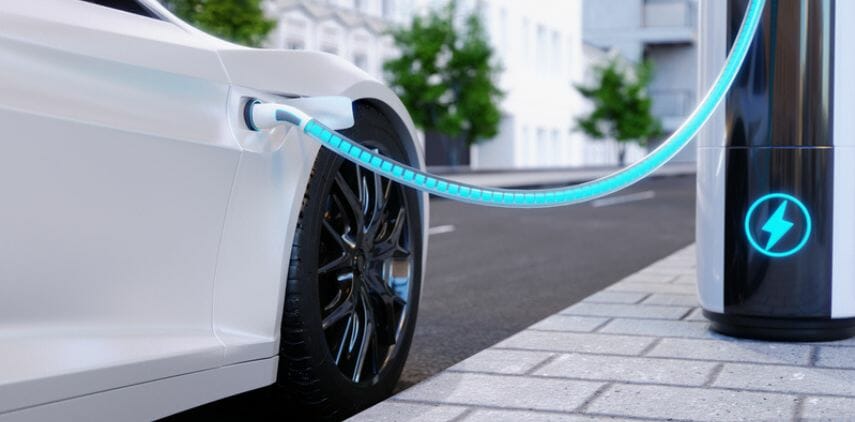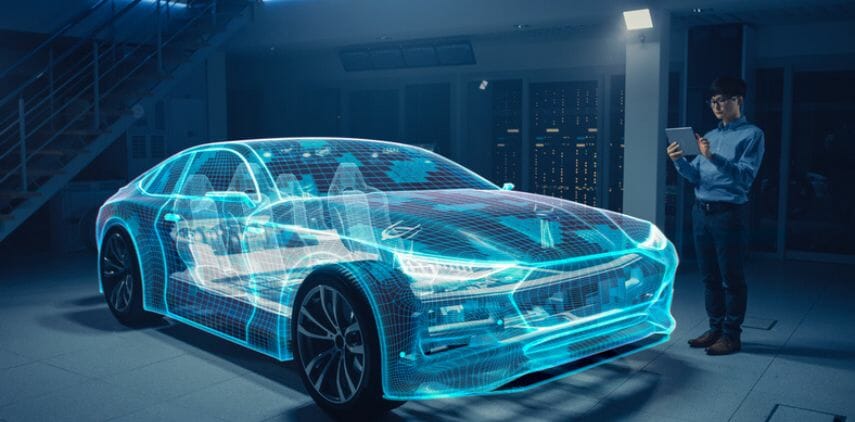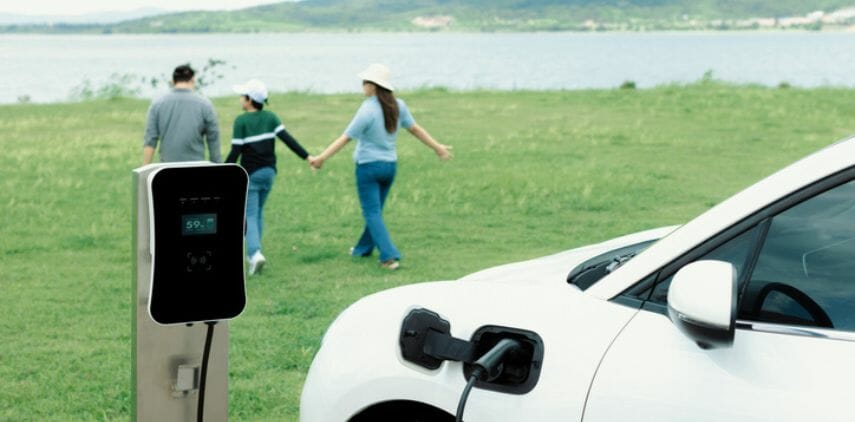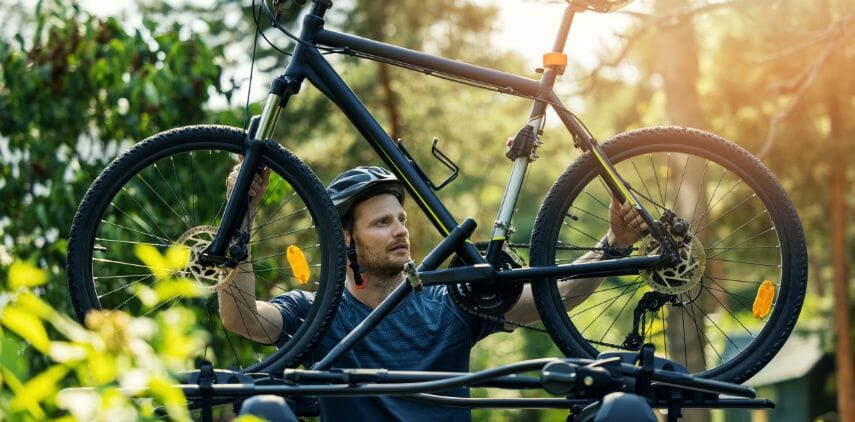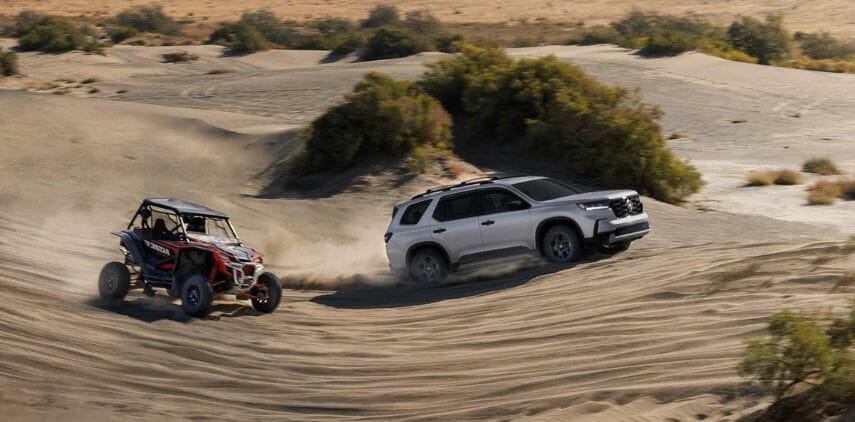Overview
It’s been a long debate whether bigger cars are safer than smaller ones. With over 30,000 car-crash-related deaths reported in the first three quarters of 2021, it’s an even more concerning question now.
As a rational buyer, you have to understand what is the best option for you and your family. Both big and small cars have their share of advantages and drawbacks, and the same applies when it comes to safety.
In this article, we are going to explore which type of vehicle is the safest according to the Insurance Institute for Highway Safety (IIHS), and what are the essential safety components you must have in your car to stay safe in case of a crash.
Table of Contents
Are small cars safe?
Small cars are equipped with loads of standard safety features and driver-assistance features, now more than ever. But does that make small cars safe? Well, it depends on who you’re comparing with. If you’re comparing a small and a large vehicle, then in all probability, the large car will be safer and more reliable in protecting its occupants during a crash.
Are bigger cars safer, really?
Now that you know small cars aren’t the best option when it comes to safety, you’ll inevitably ask “Are heavier cars safer?” When it comes to big cars, they are generally on the heavy side because of their build. IIHS explains that bigger cars are actually safer in certain circumstances, because of their heavy weight and size.
Driver death rate by vehicle type- chart
Which is more important, size or weight?
Both size and weight have an impact on how safe your vehicle is. The Insurance Institute for Highway Safety (IIHS) conducted a series of crash tests to explain the role of these two factors in determining the safety of a car.
IIHS findings on security in size and weight
According to IIHS, bigger cars offer higher protection from the risk of car crashes. When a vehicle is large, the passengers are seated farther away from the front side because of the roomy cabin, so in case of frontal crashes, the passengers remain in a comparatively safer position than small cars.
Another significant factor is the weight of the car. IIHS explains that when two vehicles are involved in a collision, the heavier vehicle will push the lighter one, so quite naturally, the lighter car will be more damaged, and the passengers will be at high risk. As for the heavier vehicle, the force of collision felt by the passengers will be lesser in intensity.
How does NHTSA rate their safety in cars
National Highway Traffic Safety Administration (NHTSA) conducts crash tests on cars and rates them on a scale of 5. The types of NHTSA crash tests include frontal crash test, side crash test, and rollover resistance test.
Crash Test
Collision Type
Evaluation
Comparison Type
Identical Crash test rates are not the same
When you’re looking at crash test scores of different cars, you have to understand that identical scores do not mean anything, if two vehicles are vastly different from each other. The test scores can be compared only when the two vehicles in question are of similar size, and belong to the same class.
Crash test scores
Let’s say a large SUV has a safety score of 8/10, and a small car has also obtained the same score. But you cannot say that both of these cars are equally safe, as their build, internal components, weight, size, and features are completely different from each other.
Small car vs. Big car occupant death (IIHS Data)
Passenger vehicle occupant deaths by vehicle type, 1975-2020
|
Year |
Car occupants |
Pickup occupants | SUV occupants | All passenger vehicle occupants | ||||
| Number | % | Number | % | Number | % | Number | % | |
| 1975 | 25,715 | 84 | 3,674 | 12 | 455 | 1 | 30,601 | 100 |
| 1976 | 26,163 | 82 | 4,225 | 13 | 577 | 2 | 31,724 | 100 |
| 1977 | 26,698 | 81 | 4,512 | 14 | 729 | 2 | 32,823 | 100 |
| 1978 | 27,898 | 80 | 5,103 | 15 | 852 | 2 | 34,923 | 100 |
| 1979 | 27,518 | 79 | 5,423 | 15 | 945 | 3 | 35,026 | 100 |
| 1980 | 27,282 | 78 | 5,489 | 16 | 1,124 | 3 | 34,996 | 100 |
| 1981 | 26,406 | 78 | 5,236 | 16 | 1,021 | 3 | 33,711 | 100 |
| 1982 | 23,144 | 78 | 4,779 | 16 | 862 | 3 | 29,656 | 100 |
| 1983 | 22,801 | 78 | 4,660 | 16 | 920 | 3 | 29,154 | 100 |
| 1984 | 23,484 | 78 | 4,884 | 16 | 886 | 3 | 30,094 | 100 |
| 1985 | 23,084 | 77 | 4,892 | 16 | 1,024 | 3 | 29,848 | 100 |
| 1986 | 24,898 | 77 | 5,334 | 17 | 1,131 | 4 | 32,224 | 100 |
| 1987 | 25,160 | 76 | 5,795 | 17 | 1,269 | 4 | 33,145 | 100 |
| 1988 | 25,876 | 76 | 6,089 | 18 | 1,320 | 4 | 34,105 | 100 |
| 1989 | 25,334 | 75 | 6,016 | 18 | 1,373 | 4 | 33,599 | 100 |
| 1990 | 24,463 | 75 | 6,032 | 18 | 1,480 | 5 | 32,711 | 100 |
| 1991 | 22,794 | 74 | 5,858 | 19 | 1,521 | 5 | 30,810 | 100 |
| 1992 | 21,889 | 74 | 5,476 | 19 | 1,390 | 5 | 29,457 | 100 |
| 1993 | 22,166 | 74 | 5,611 | 19 | 1,552 | 5 | 29,994 | 100 |
| 1994 | 22,708 | 74 | 5,604 | 18 | 1,809 | 6 | 30,820 | 100 |
| 1995 | 23,219 | 73 | 5,973 | 19 | 2,006 | 6 | 31,914 | 100 |
| 1996 | 23,526 | 73 | 5,928 | 18 | 2,210 | 7 | 32,353 | 100 |
| 1997 | 23,243 | 72 | 5,922 | 18 | 2,416 | 7 | 32,343 | 100 |
| 1998 | 22,475 | 71 | 5,904 | 19 | 2,711 | 9 | 31,781 | 100 |
| 1999 | 22,209 | 69 | 6,095 | 19 | 3,019 | 9 | 32,008 | 100 |
| 2000 | 22,091 | 69 | 5,996 | 19 | 3,337 | 10 | 32,109 | 100 |
| 2001 | 21,688 | 68 | 6,121 | 19 | 3,521 | 11 | 31,938 | 100 |
| 2002 | 22,114 | 68 | 6,058 | 19 | 4,022 | 12 | 32,724 | 100 |
| 2003 | 21,125 | 66 | 5,833 | 18 | 4,463 | 14 | 32,166 | 100 |
| 2004 | 20,623 | 65 | 5,716 | 18 | 4,772 | 15 | 31,750 | 100 |
| 2005 | 19,956 | 63 | 6,040 | 19 | 4,847 | 15 | 31,455 | 100 |
| 2006 | 19,087 | 62 | 5,877 | 19 | 4,973 | 16 | 30,628 | 100 |
| 2007 | 17,805 | 61 | 5,758 | 20 | 4,975 | 17 | 29,155 | 100 |
| 2008 | 15,725 | 62 | 5,021 | 20 | 4,350 | 17 | 25,547 | 100 |
| 2009 | 14,124 | 60 | 4,719 | 20 | 4,254 | 18 | 23,507 | 100 |
| 2010 | 13,433 | 60 | 4,443 | 20 | 4,130 | 18 | 22,351 | 100 |
| 2011 | 12,738 | 59 | 4,245 | 20 | 4,095 | 19 | 21,413 | 100 |
| 2012 | 13,112 | 60 | 4,339 | 20 | 4,171 | 19 | 21,906 | 100 |
| 2013 | 12,731 | 60 | 4,215 | 20 | 4,098 | 19 | 21,361 | 100 |
| 2014 | 12,543 | 59 | 4,223 | 20 | 4,103 | 19 | 21,131 | 100 |
| 2015 | 13,320 | 59 | 4,490 | 20 | 4,577 | 20 | 22,741 | 100 |
| 2016 | 14,057 | 59 | 4,625 | 19 | 4,908 | 20 | 23,957 | 100 |
| 2017 | 13,902 | 58 | 4,434 | 19 | 5,186 | 22 | 23,866 | 100 |
| 2018 | 13,260 | 58 | 4,380 | 19 | 5,059 | 22 | 23,046 | 100 |
| 2019 | 12,535 | 56 | 4,284 | 19 | 5,365 | 24 | 22,557 | 100 |
| 2020 | 13,578 | 57 | 4,390 | 18 | 5,757 | 24 | 24,019 |
100 |
Source: IIHS
Are SUVs safer than Sedans? And why?
This is more complex than a simple yes and no answer. Both sedans and SUVs can be safe for passengers, depending on the model, the standard safety equipment list, the weight of the vehicle, etc.
SUVs are safer than sedans when involved in a head-on or side-on collision. The heavy weight of the SUV puts pressure on the lightweight vehicle, and the passengers of the SUV experience less severe impact.
However, in the case of rollovers, an SUV has a greater momentum than lighter cars, for instance, sedans or hatchbacks. Because of high momentum, the occupants of the SUV will feel a heavy jolt. But if the SUV is equipped with necessary safety features, the passengers will remain somewhat protected.
Top Safety Features to look for
Big or small– the car you buy must be equipped with modern safety features, to make your rides safe and secure. Listed below are some top safety techs you should look out for before choosing a car:
Crash test rating
Before buying a vehicle, it’s important to take a look at its crash test reports. Government and third-party organizations such as National Highway Traffic Safety Administration (NHTSA), Insurance Institute for Highway Safety (IIHS), and J.D. Power conduct several tests to assess the safety of newly launched vehicles. By looking at the safety ratings, you’ll have a better idea about how the vehicle will perform in real life, and how safe it is for you and your family.
Electronic stability control
Electronic stability control is a vital safety component in modern cars. It’s a computer-operated automatic system that assists the driver in case the vehicle is losing traction. The moment it monitors that the car is veering from the intended path of the driver, stability control applies the brakes and helps the driver regain control.
Blind spot monitor
Blind spot monitor refers to a special sensor that alerts the driver if there’s another vehicle on the side or back. This warning or alarm is sent to the driver through sound, vibration, or visual cues. In some vehicles, a blind-spot monitor comes with a rear cross-traffic alert, a system that detects if another vehicle is approaching when the driver is taking the car out of a parking space.
Adaptive cruise control
Adaptive cruise control is a modern driver-assist feature that helps maintain a safe, convenient, and comfortable driving environment. This system enables your car to maintain a safe distance from the vehicle ahead, and in order to do so, adjusts the speed of your car automatically.
Anti-lock braking system
The anti-lock braking system, popularly known as ABS, is another safety equipment that most modern cars get as standard. It prevents unwanted locking of the wheels. ABS makes it possible to apply brakes on wet or slippery roads.
Airbags
Airbags are necessary safety features that protect the driver and the occupants during a crash or collision. They are usually not visible, but the moment the sensors detect that the car is involved in a crash, the cushions get inflated.
Wheel Size
The bigger the wheel size, the more rubber it will have on the surface. Because of this reason, the tire manages to have a strong hold on the road you’re driving on and ensures good traction. If you’re looking for excellent handling and cornering in your next car, choosing a vehicle with large wheels would be a good choice.
Isofix mounts
ISOFIX seats are standardized safety seats for children in cars. These seats are designed to be attached to the designated ISOFIX mounts (available in nearly all standard cars these days) and are quite easy to attach and detach. The seats can be of multiple types, created according to the age of the child.
Apart from these, you should also look out for the weight and size of the vehicle, because as we explained earlier, bigger cars are considerably safer.
Yes, to a certain extent. During a crash, a heavyweight vehicle has more power to push a lighter vehicle. This creates a heavy force on the occupants of the lighter vehicle, whereas the passengers inside the heavyweight vehicle experience a considerably low force.
[/dipl_faq_page_schema_item][dipl_faq_page_schema_item faq_question=”2. What is the most unsafe car?” _builder_version=”4.17.3″ _module_preset=”default” question_heading_level=”h3″ global_colors_info=”{}”]
Vehicles belonging to the Ford F-Series are the most unsafe cars, as they were found to be involved in more than 10,000 fatal accidents.
[/dipl_faq_page_schema_item][dipl_faq_page_schema_item faq_question=”3. What is the safest type of car?” _builder_version=”4.17.3″ _module_preset=”default” question_heading_level=”h3″ global_colors_info=”{}”]Because of their heavy weight, large size, high ground clearance, and advanced safety features, SUVs are often considered to be the safest type of car. However, you must remember that SUVs can experience rollovers. You should always do in-depth research before buying any type of car, to make sure it’s safe. [/dipl_faq_page_schema_item][dipl_faq_page_schema_item faq_question=”4. What is the safest car in a crash?” _builder_version=”4.17.3″ _module_preset=”default” question_heading_level=”h3″ global_colors_info=”{}”]
With top ratings from IIHS and NHTSA, Subaru Legacy is the safest car in a crash.
[/dipl_faq_page_schema_item][dipl_faq_page_schema_item faq_question=”5. Is a car or SUV safer?” _builder_version=”4.17.3″ _module_preset=”default” question_heading_level=”h3″ global_colors_info=”{}”]An SUV is safer than a regular car in case of a side-on or head-on collision. The heavy weight of the SUV creates pressure on the lighter vehicle involved in the collision, and the occupants of the SUV experience less impact. [/dipl_faq_page_schema_item][/dipl_faq_page_schema]


